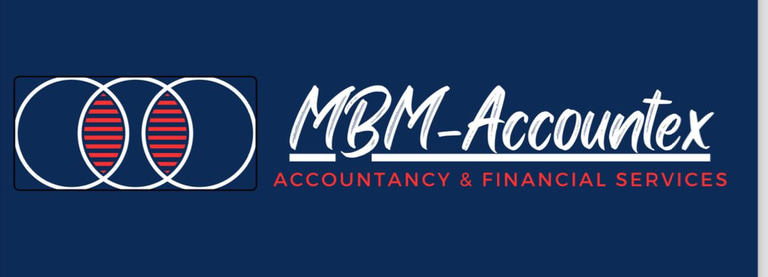Accounting | Bookkeeping | Corporation Tax | Company Formations | PAYE | CIS | Sole Traders | Landlords | Capital & Crypto gains Tax | Mortgages
Tax avoidance vs tax evasion – what’s the difference?
tax avoidance
MBM
10/1/20233 min read
Tax evasion and avoidance schemes are designed to reduce people’s tax bills and are both viewed negatively by HMRC.
The difference between tax avoidance and tax evasion is that tax avoidance schemes operate within the law, but are described by HMRC as not being ‘in the spirit of the law.
Genuine mistakes on a tax return such as misculautions and missed deadlines can also be considered tax avoidance.
On the other hand, tax evasion involves deliberately withholding or providing inaccurate information to pay less tax.
Examples of this include:
providing false documents – creating fake invoices or contracts to reduce payments
making false expense claims – claiming tax relief for costs you haven’t incurred
failing to declare goods – or underestimating their value to pay less tax
Tax avoidance vs tax evasion – what’s the difference?
Tax evasion and avoidance schemes are designed to reduce people’s tax bills and are both viewed negatively by HMRC.
The difference between tax avoidance and tax evasion is that tax avoidance schemes operate within the law, but are described by HMRC as not being ‘in the spirit of the law’.
Genuine mistakes on a tax return such as misculautions and missed deadlines can also be considered tax avoidance.
On the other hand, tax evasion involves deliberately withholding or providing inaccurate information to pay less tax.
Examples of this include:
providing false documents – creating fake invoices or contracts to reduce payments
making false expense claims – claiming tax relief for costs you haven’t incurred
failing to declare goods – or underestimating their value to pay less tax
Is it illegal?
Yes, tax evasion is treated as tax fraud. If you’re found guilty of tax evasion after an HMRC investigation, you could receive a big fine or a prison sentence.
Read our guide on HMRC tax investigations.
Fines for tax evasion in the UK?
Anyone found guilty of income tax or VAT evasion could receive an unlimited fine or a maximum of seven years in prison.
If you’re convicted of providing false documentation to HMRC, you could receive a six-month prison sentence or a maximum fine of £20,000.
For the most serious cases of tax evasion, known as “cheating the public revenue”, offenders could be sentenced to life in prison and/or an unlimited fine.
Tax avoidance schemes – key signs to look for?
Businesses should think very carefully and speak to a professional accountant or tax expert before joining any kind of tax scheme as there’s a chance it could be illegal.
Tax avoidance schemes will often claim to be tax efficient, legitimate, or even endorsed by HMRC.
Here’s what you need to watch out for:
extra payments – if you’re paid money outside of your salary through loans or grants, this could mean that income isn’t being taxed
unnecessary transactions – if payments are being made that don’t seem to have any purpose and the money appears to be going round in circles
bold claims and benefits – if you’re being told that your take home pay will increase significantly
If you think you might be part of a tax avoidance scheme, you should contact HMRC immediately. You’ll have to settle what you owe so the sooner you report it, the less interest you’ll pay.
Tax avoidance schemes and umbrella companies
The number of contractors working through umbrella companies has increased significantly since April 2021 when IR35 rules were introduced.
Joining an umbrella company means contractors don’t have to set up their own limited company and don’t have to manage things like payroll.
However, because of the way they’re set up, umbrella companies can be used for tax avoidance.
HMRC advises all contractors, freelancers, and agency staff who work through umbrella companies to check their payslips to make sure they’re not part of a tax avoidance scheme.
One of the main things to look out for is if your payslip shows a wage lower than the amount of money that gets paid into your bank account. For example, your payslip says your net pay is £1,800, but you actually receive £2,200 from the umbrella company.
Putting a lower wage on your payslip allows the umbrella company to pay less tax. If you’re receiving extra income from an umbrella company that isn’t shown on your payslip, you could be part of a tax avoidance scheme.
Extra payments are often described as:
bonuses
profit shares
loans
credit facilities
capital payments
You can use HMRC’s tax calculator and National Insurance calculator to work out how much tax you should be paying and whether it matches up to your payslips and bank account.
Contacts:
Email: Hello@mbm-accountex.com
MOB: 07448424331 Mainline: 01582 292 021
Find us on social:
Subscribe to our newsletter:
Luton
Slough
Innovation centre & Business base point, 110 Butterfield, Great Marlings, Luton, LU2 8DL
Spaces, The Porter Building,1 Brunel Way, Slough, Berkshire, SL1 1FQ
182-184 High Street North
East Ham, London
E6 2JA
London
